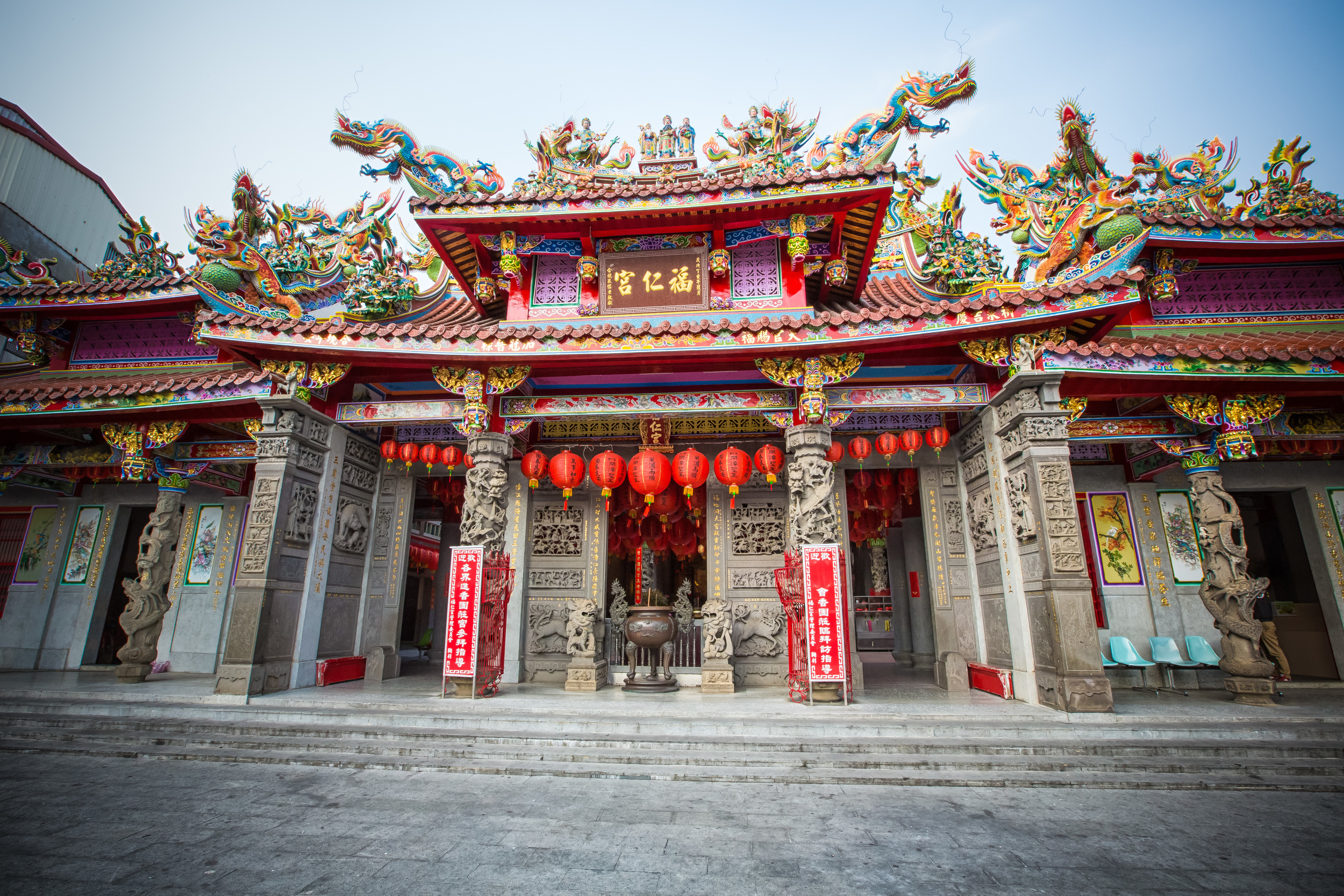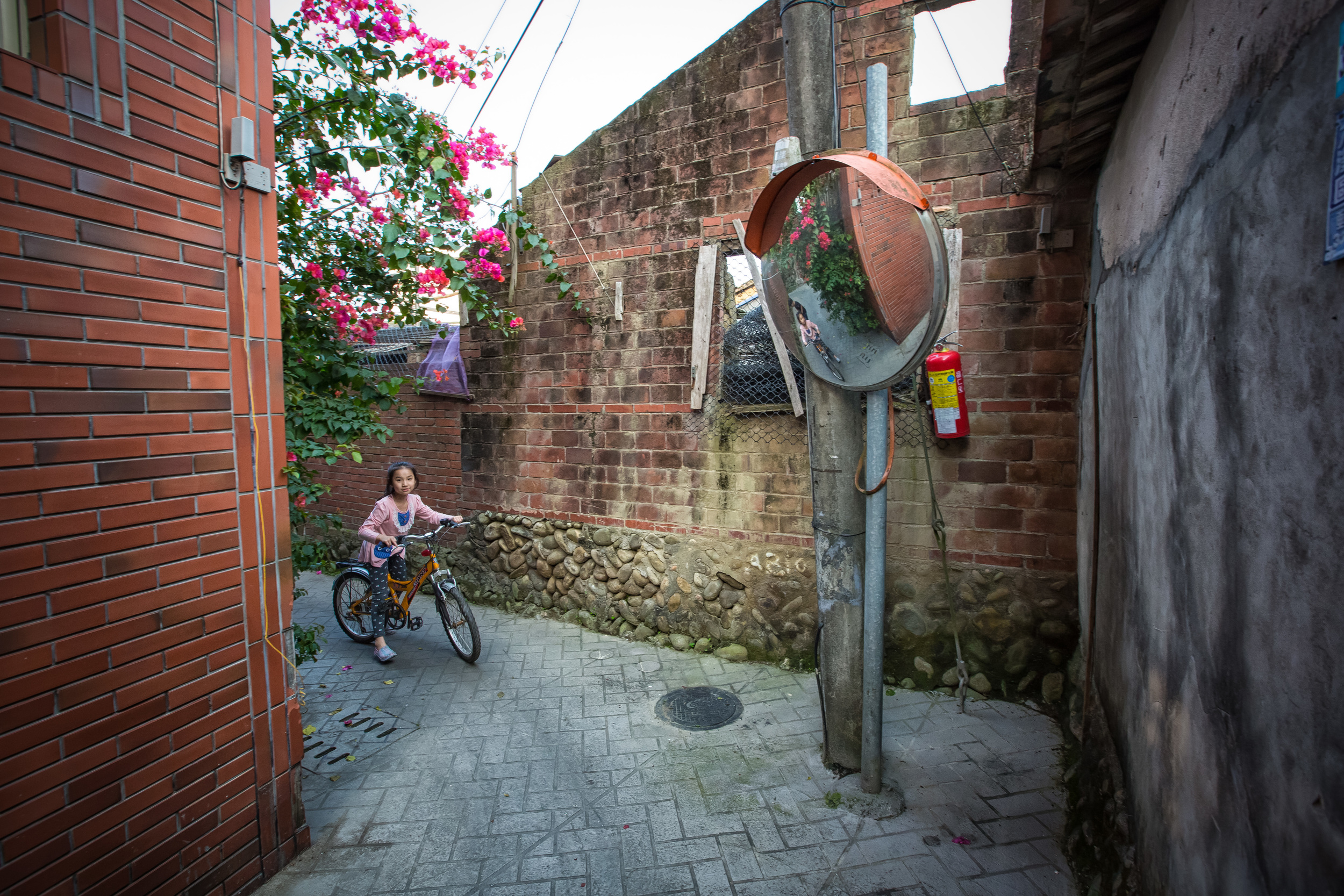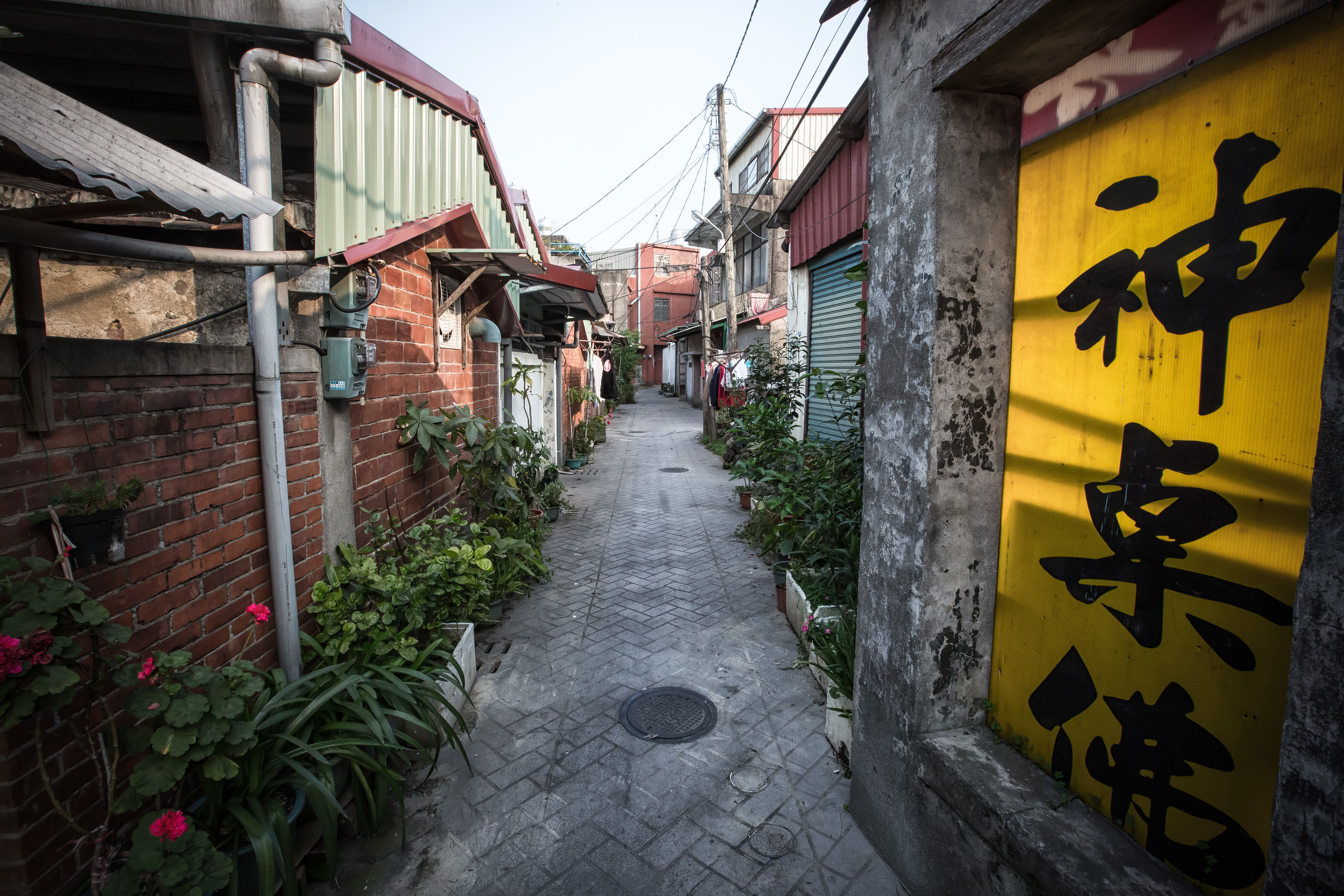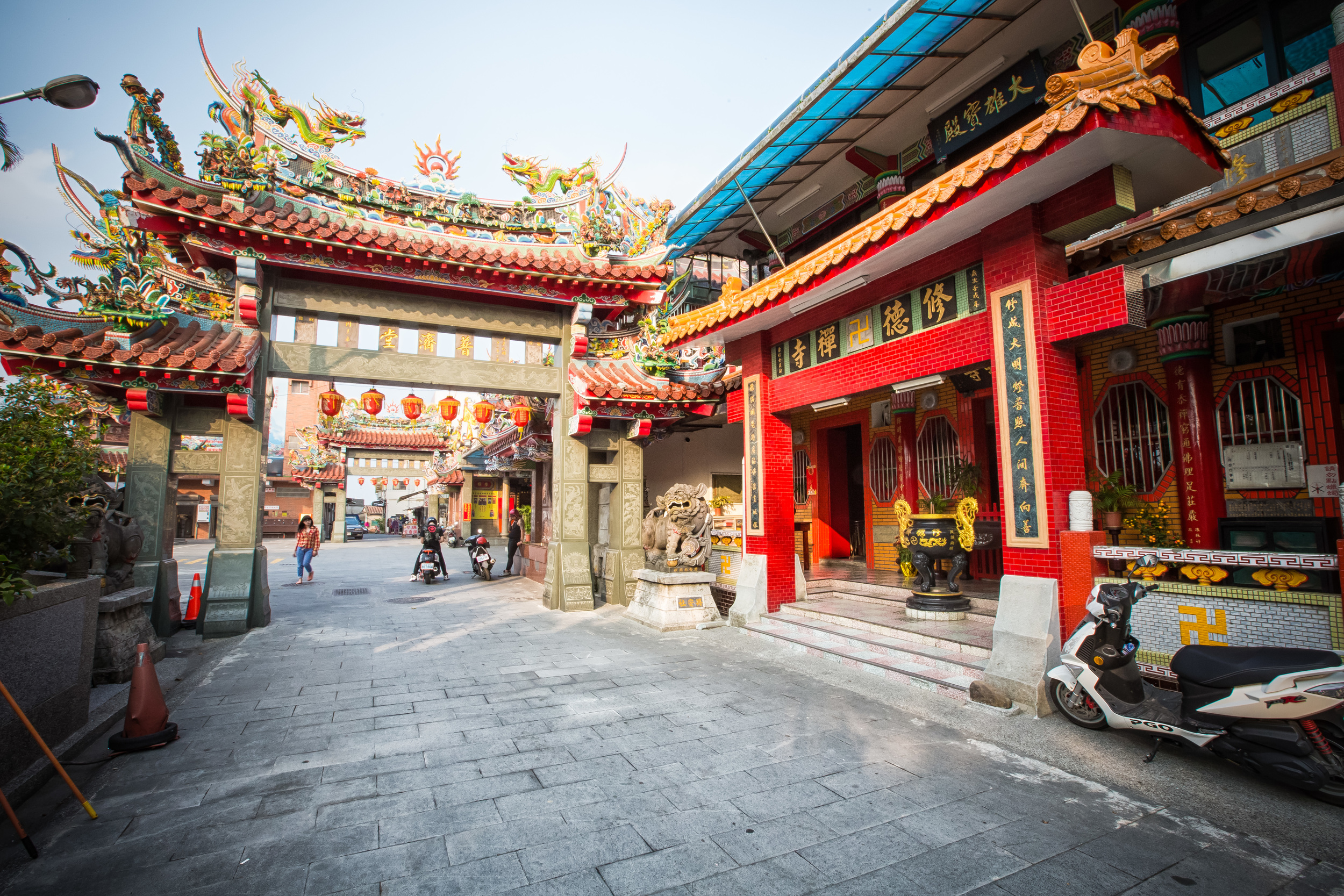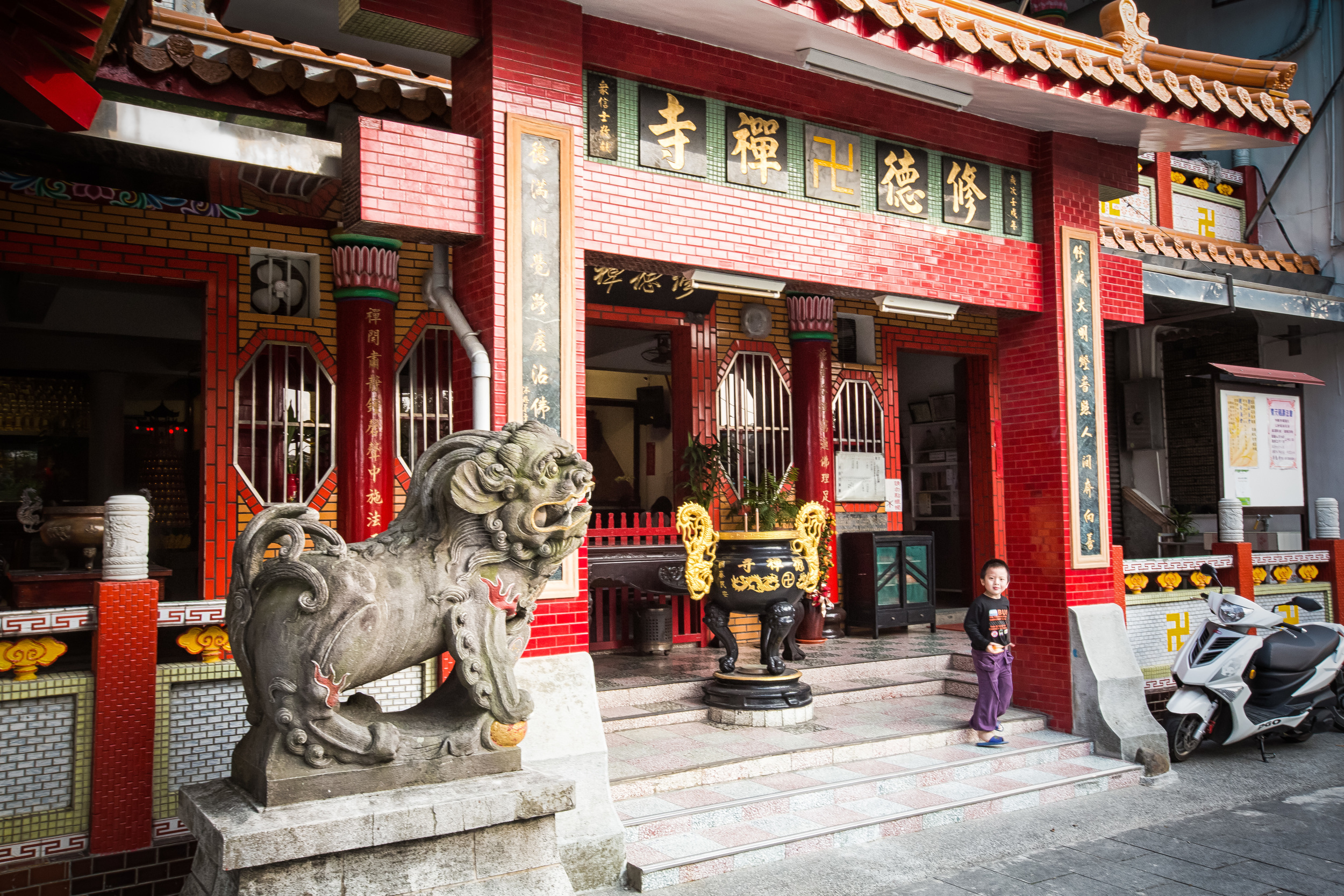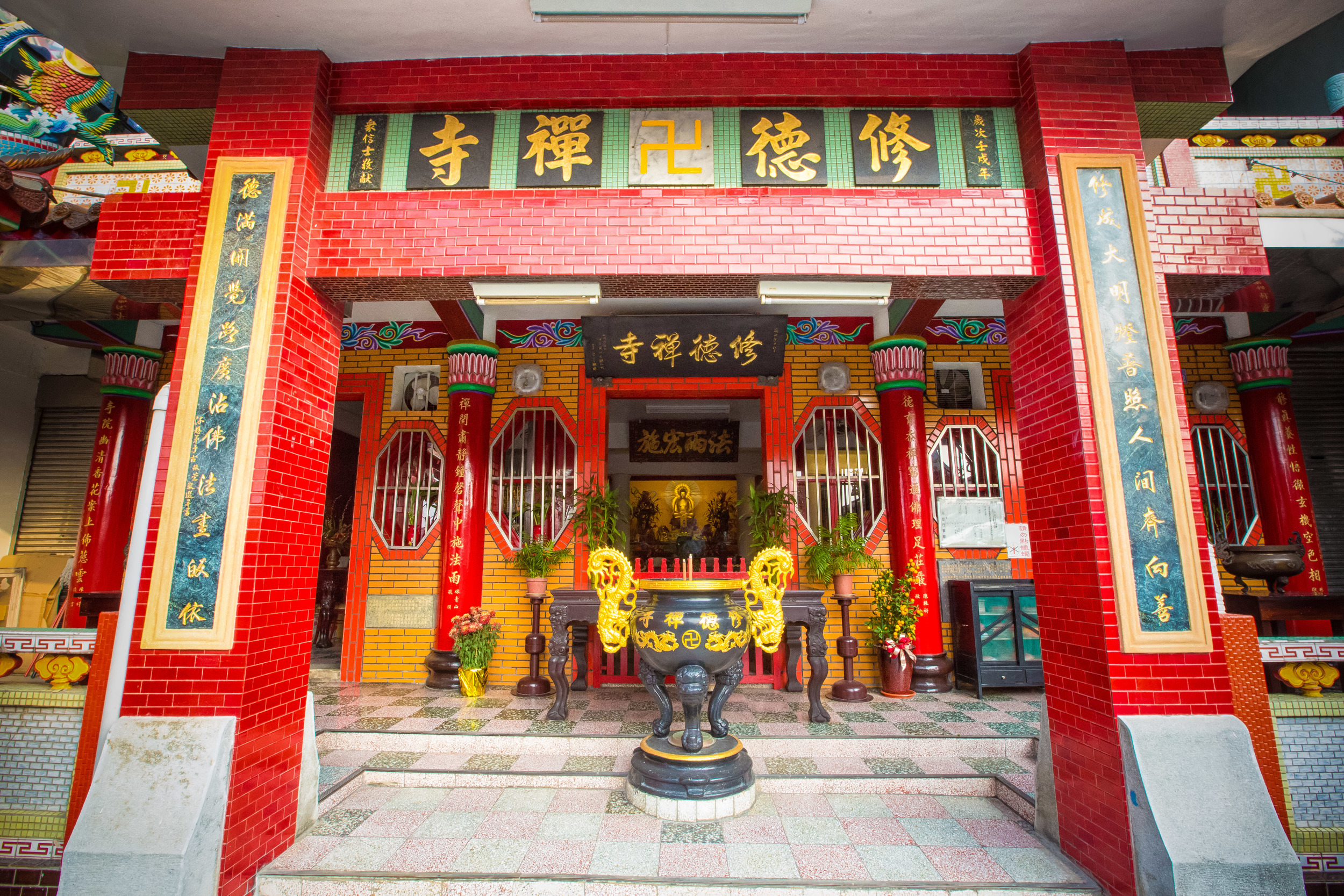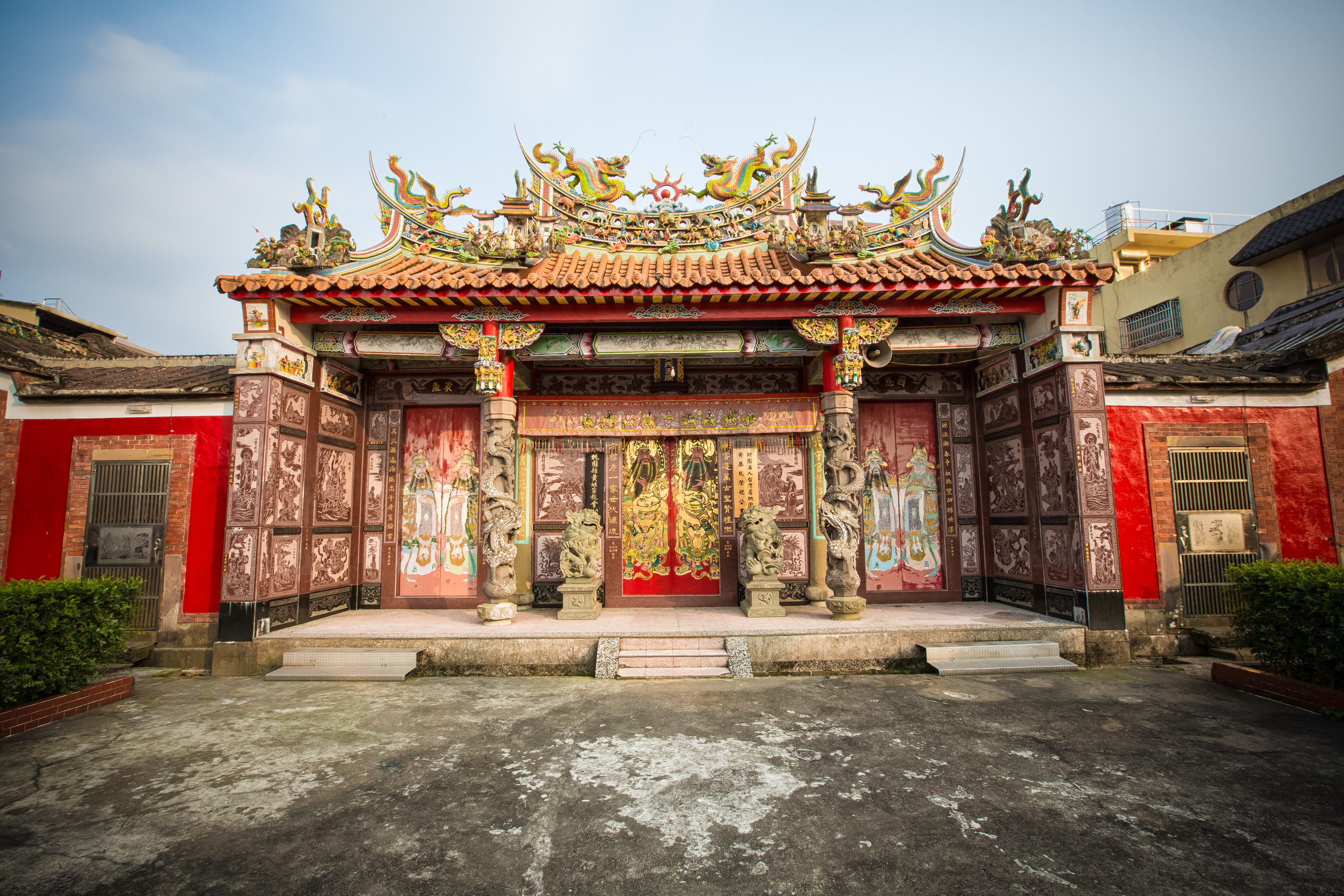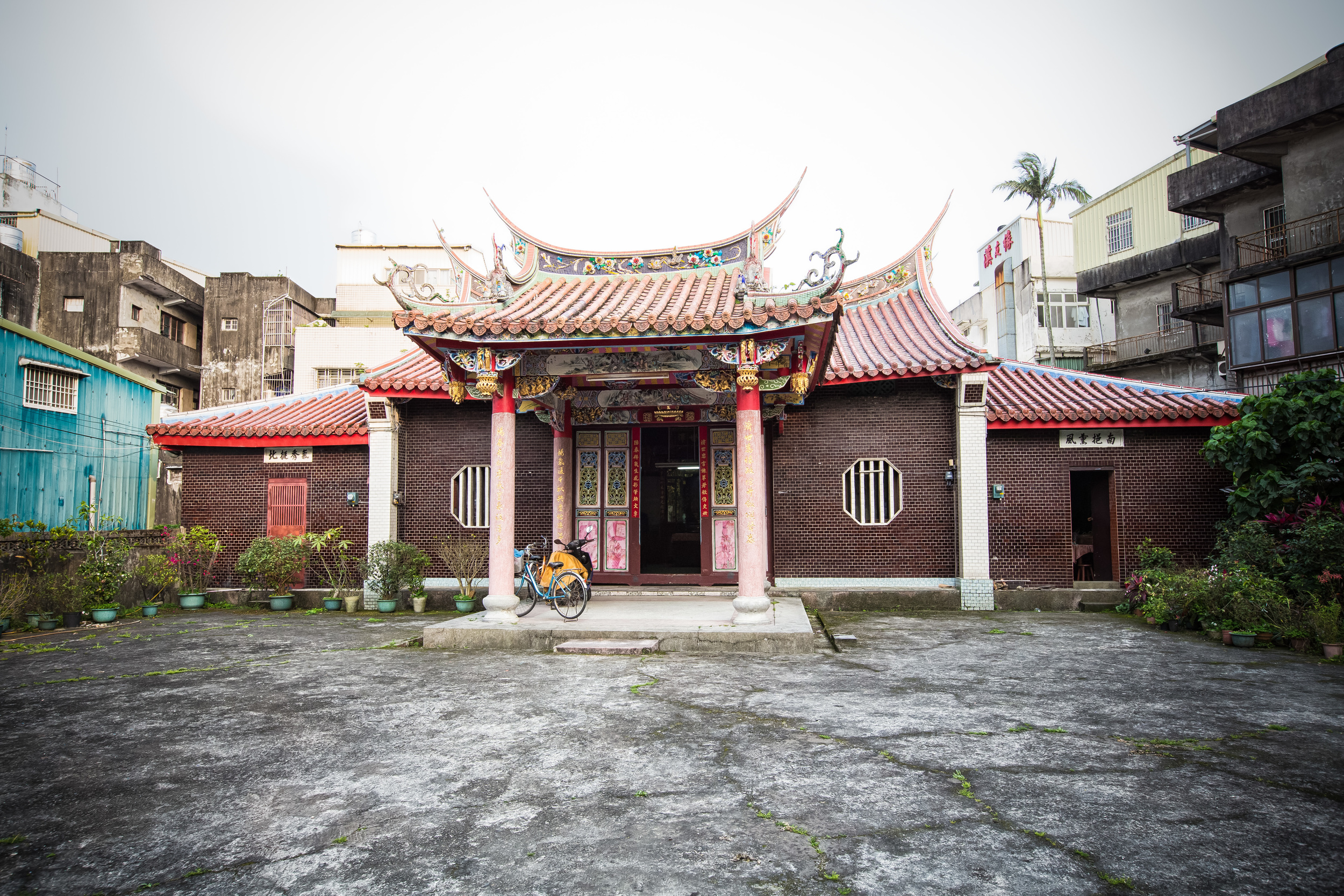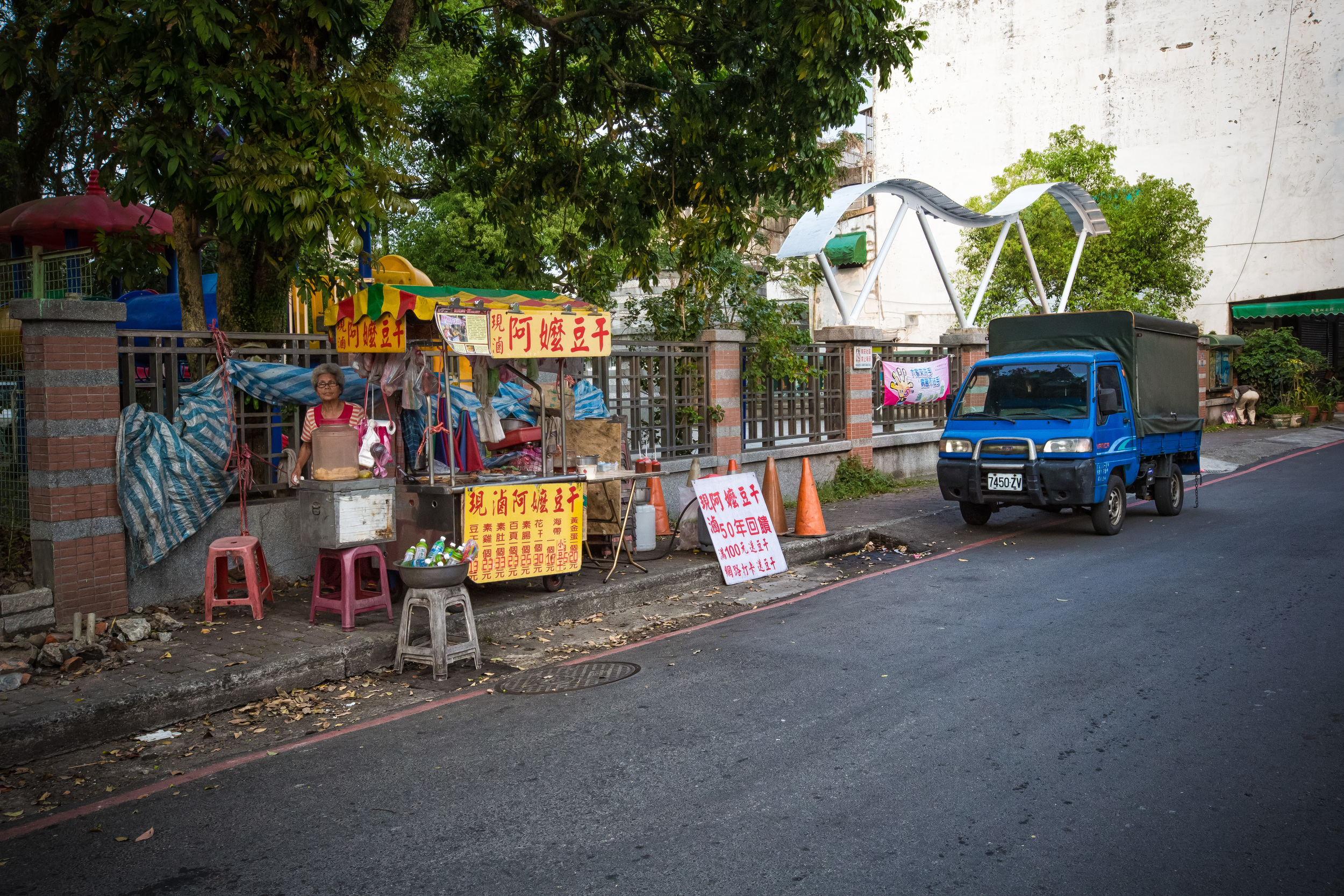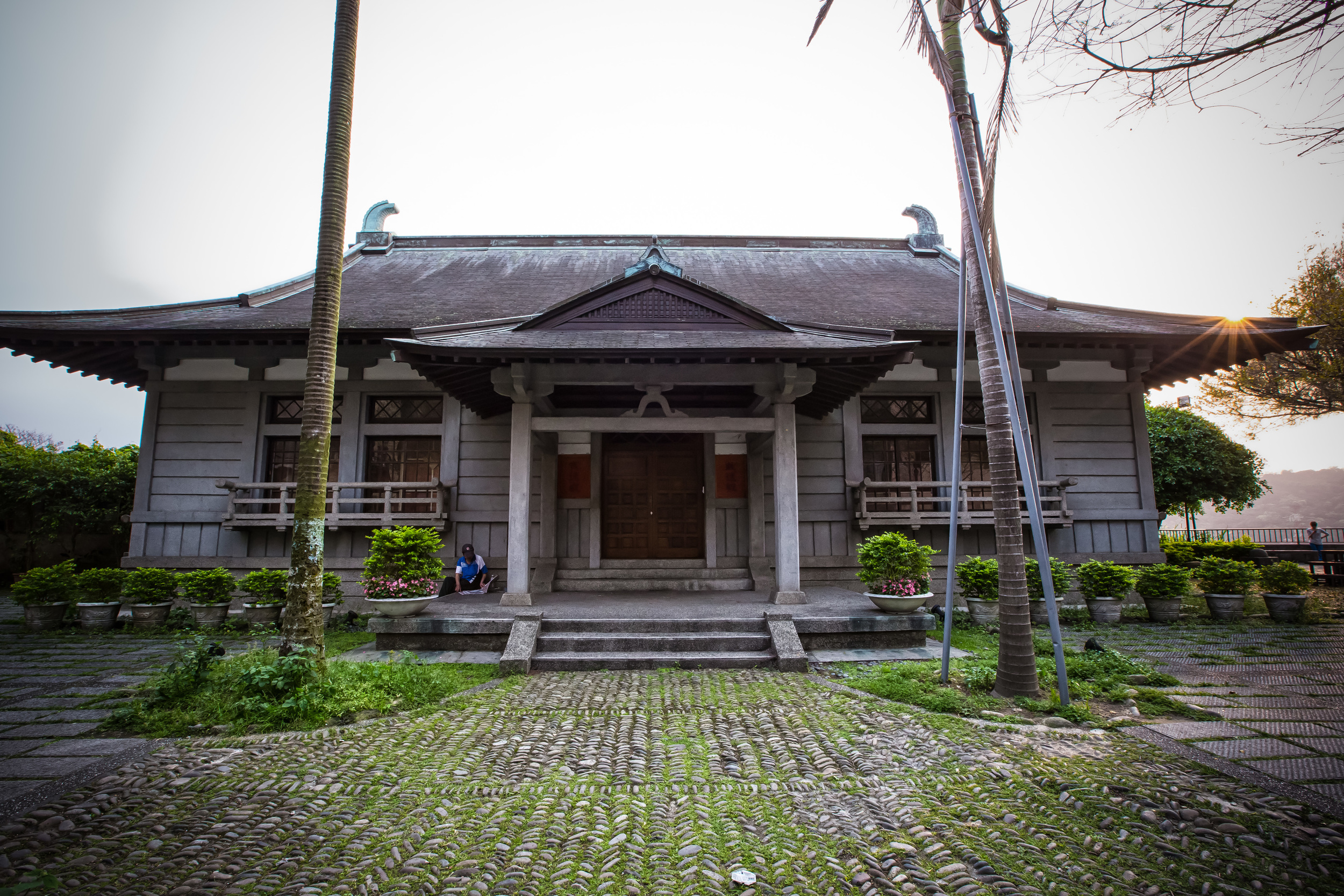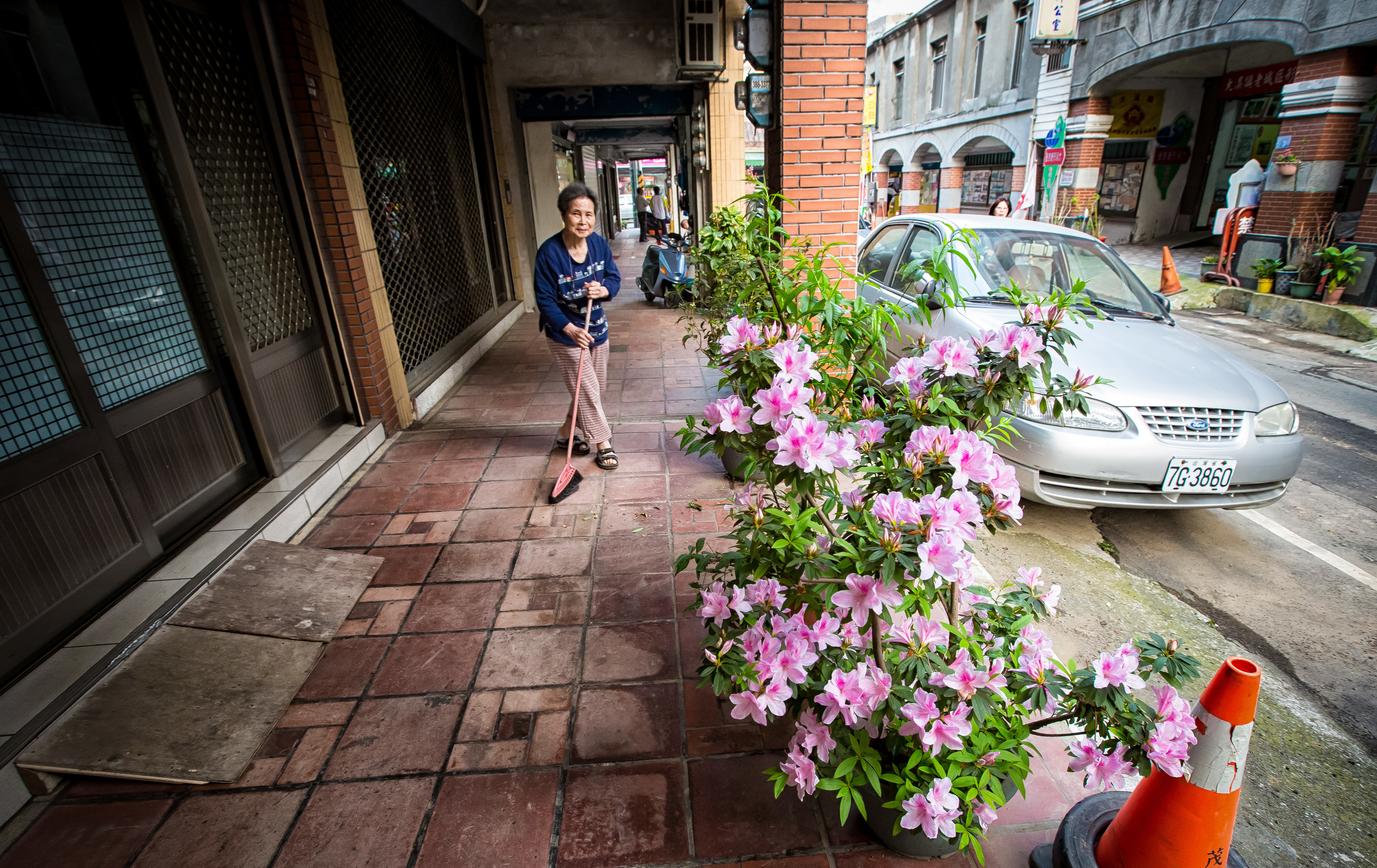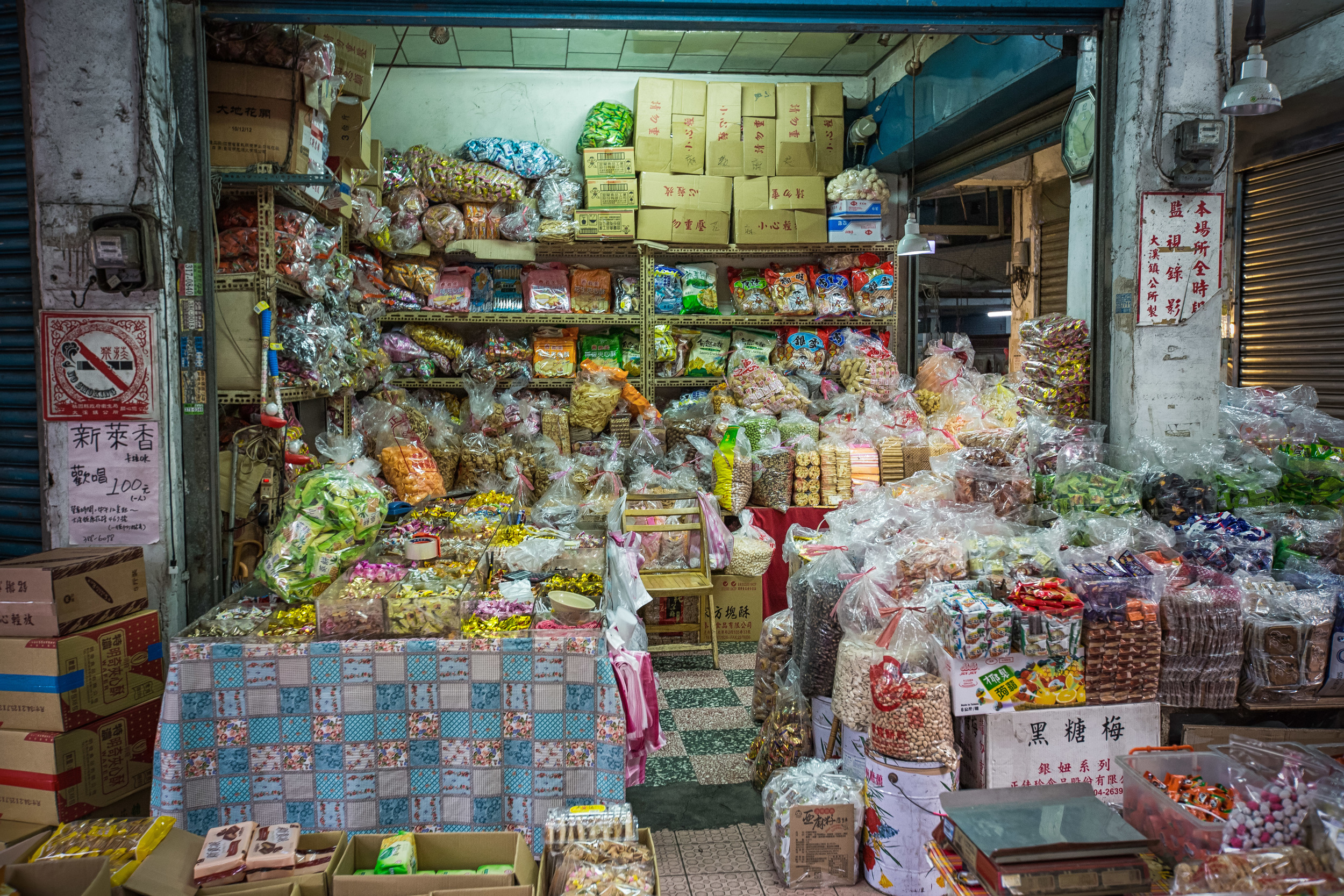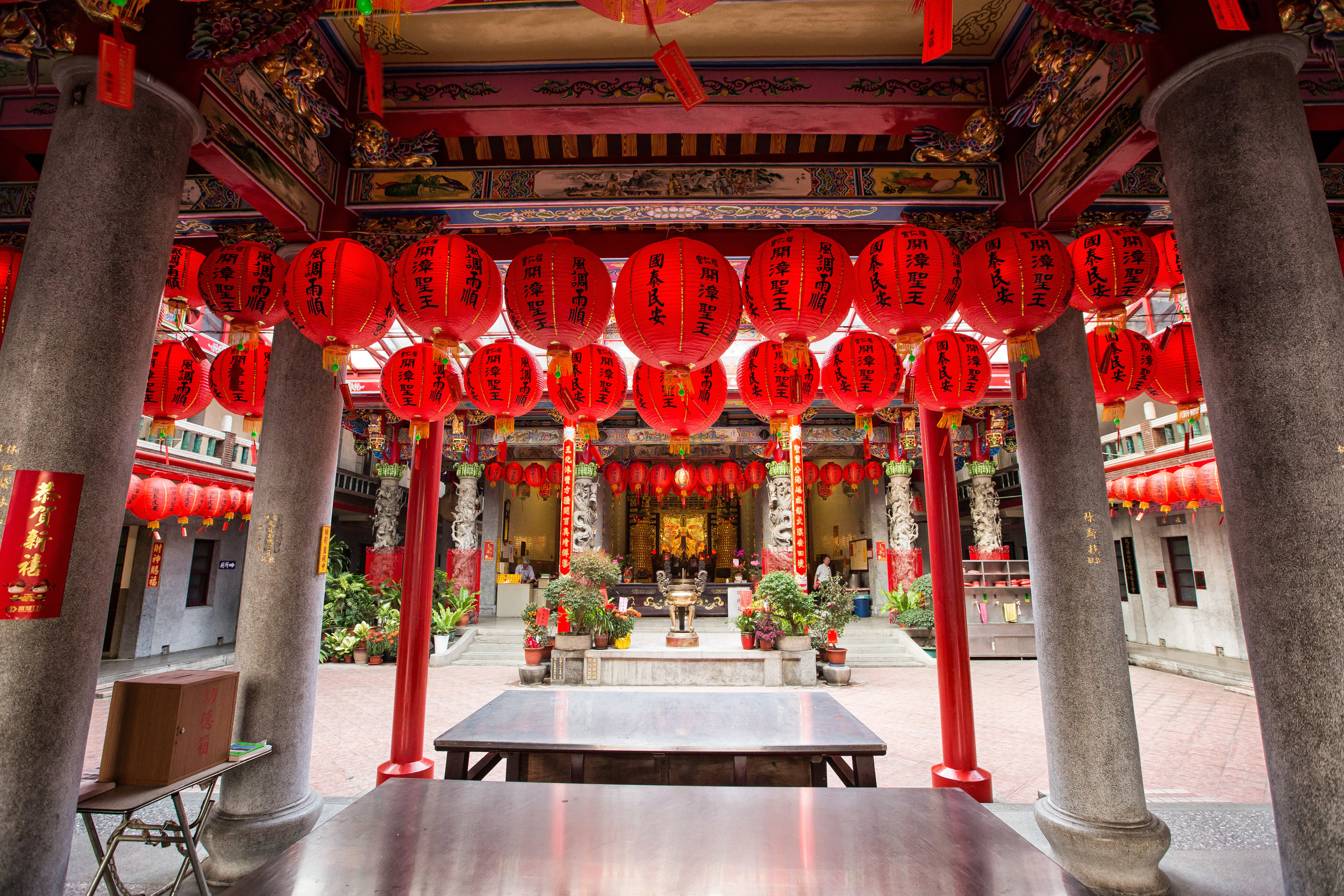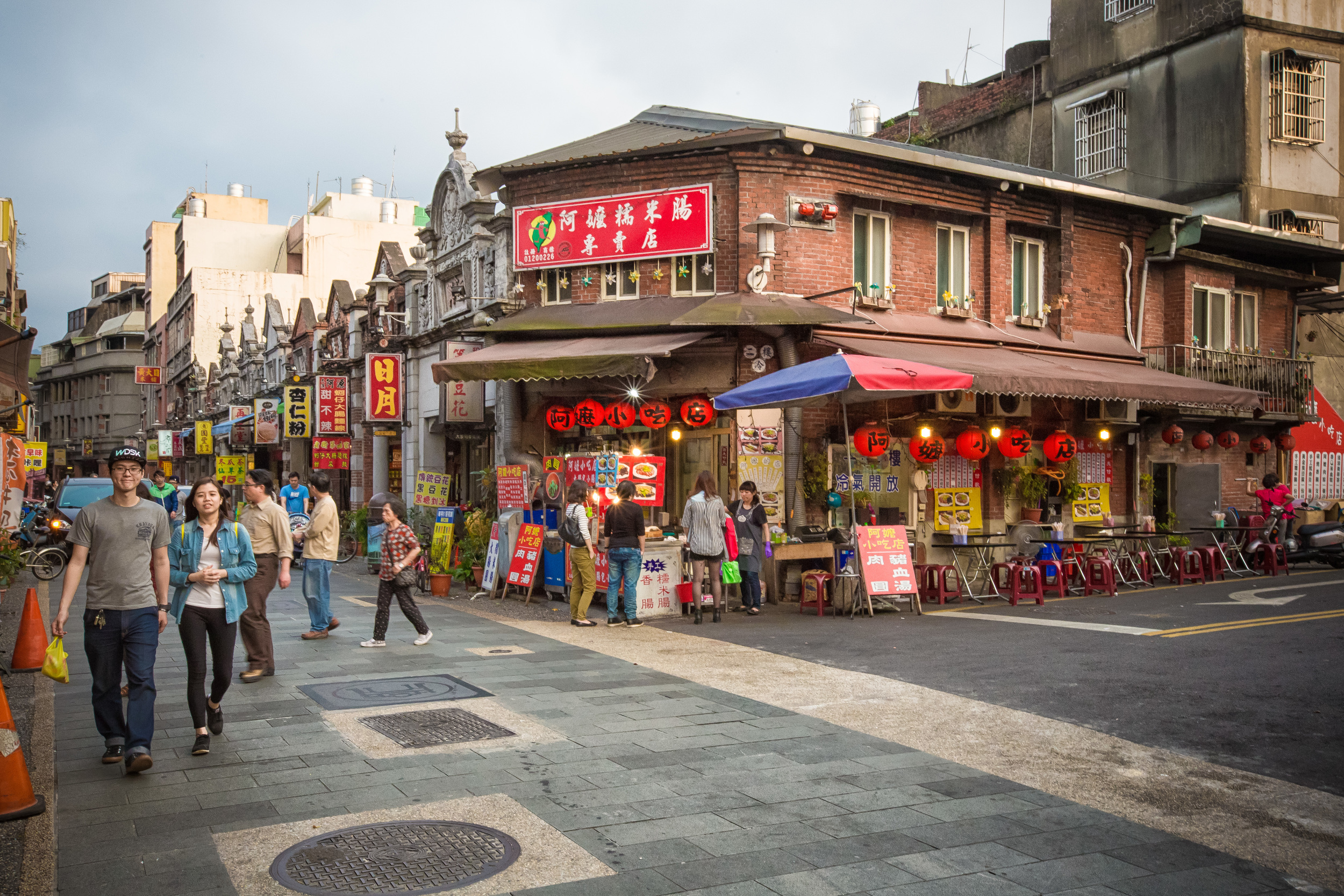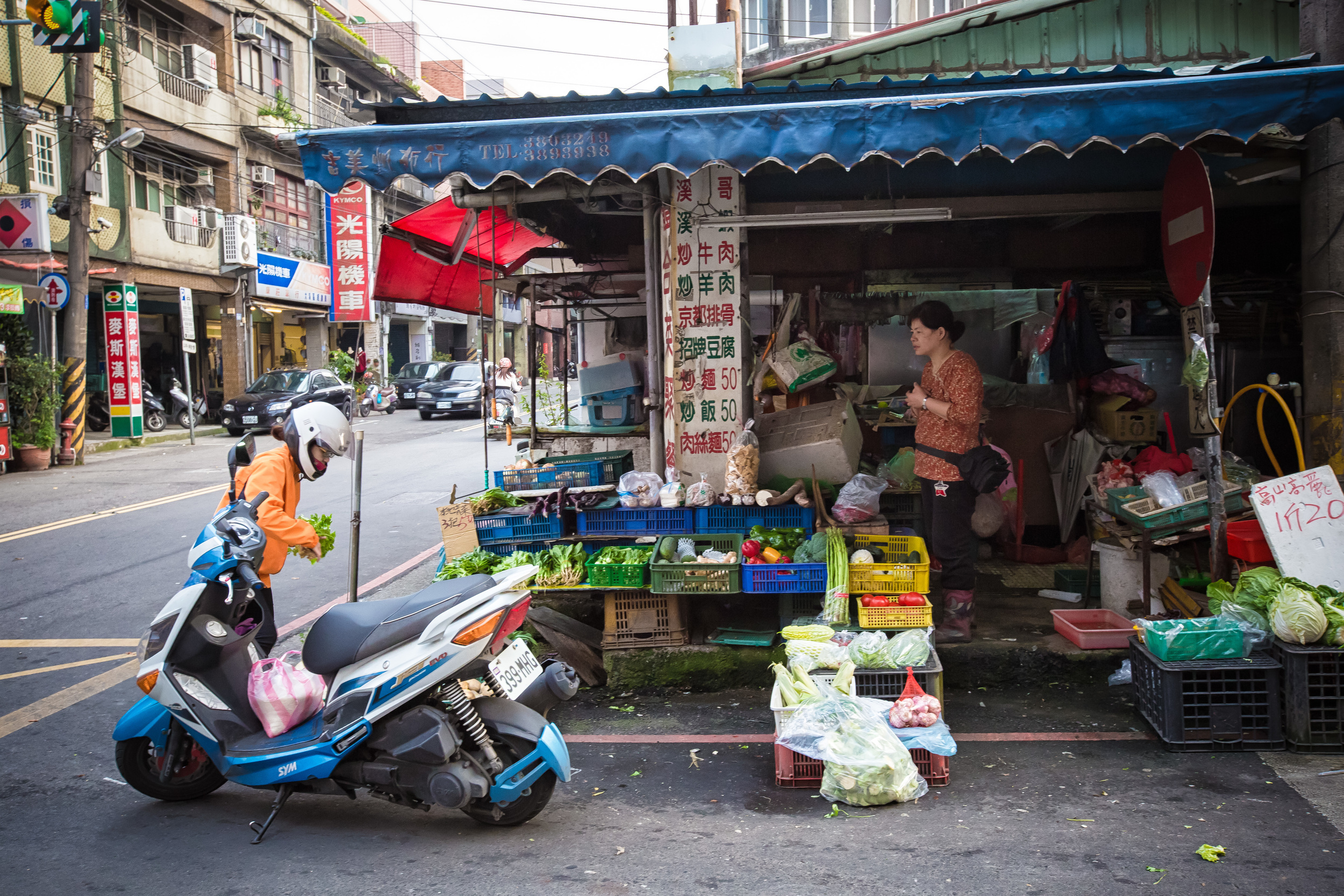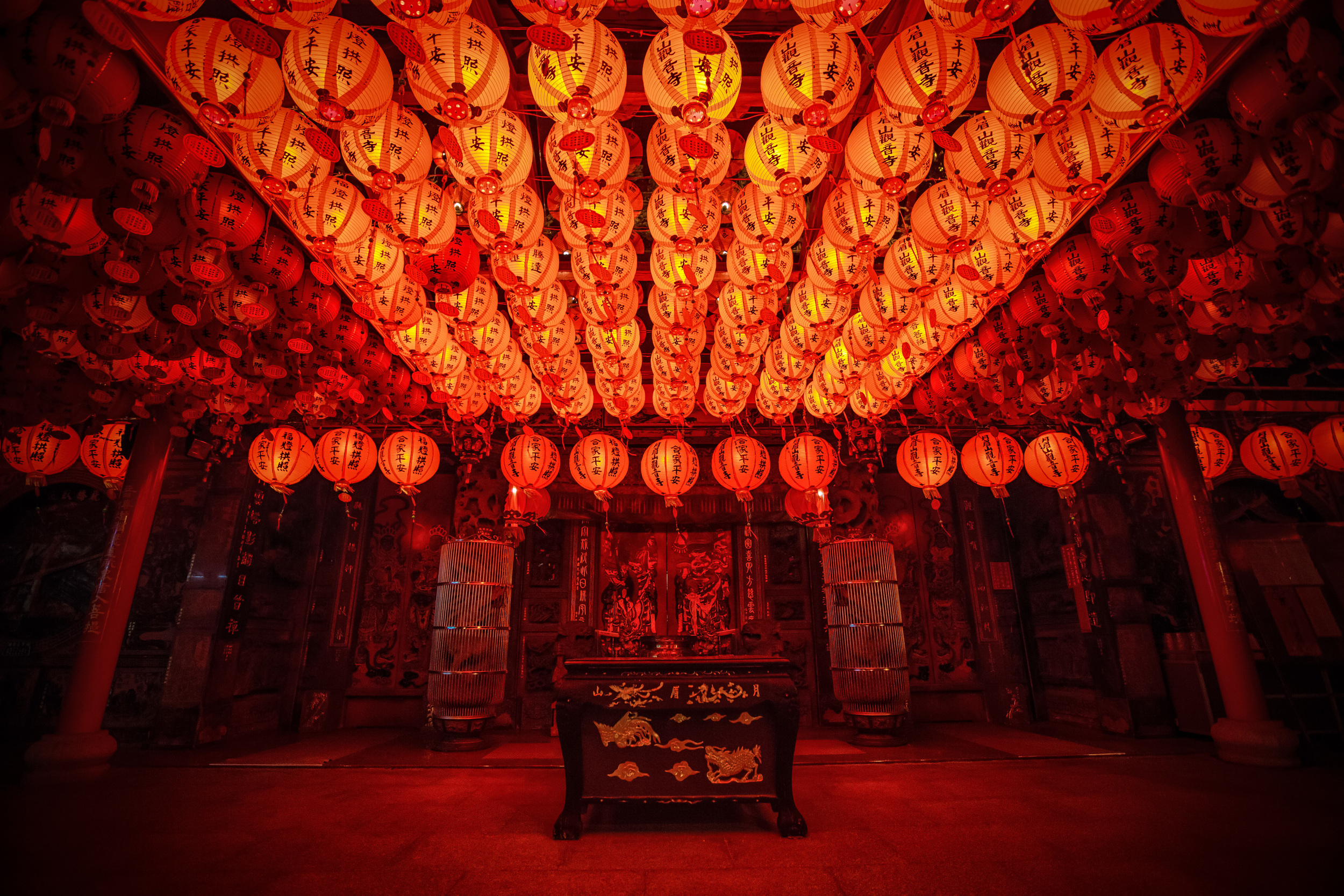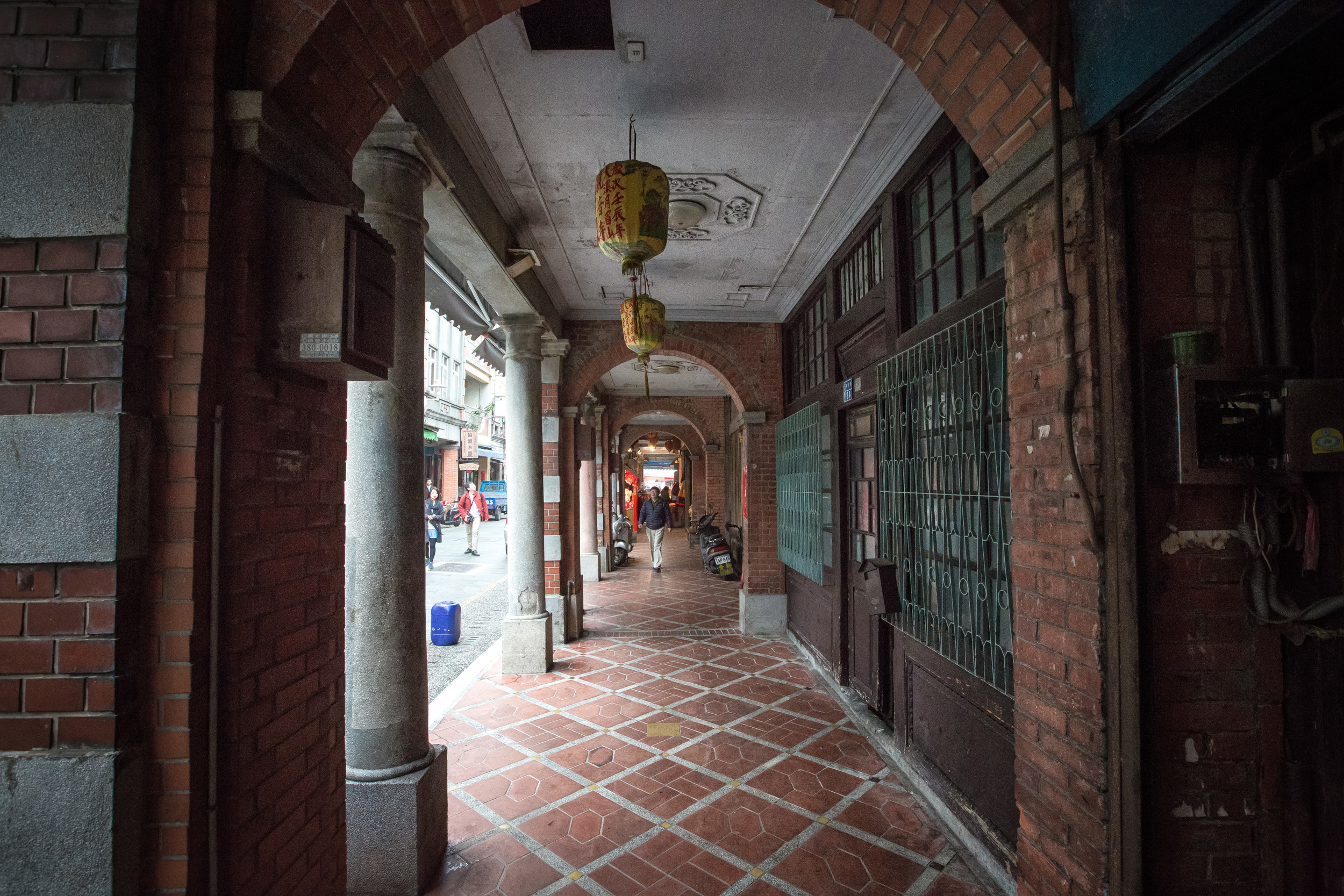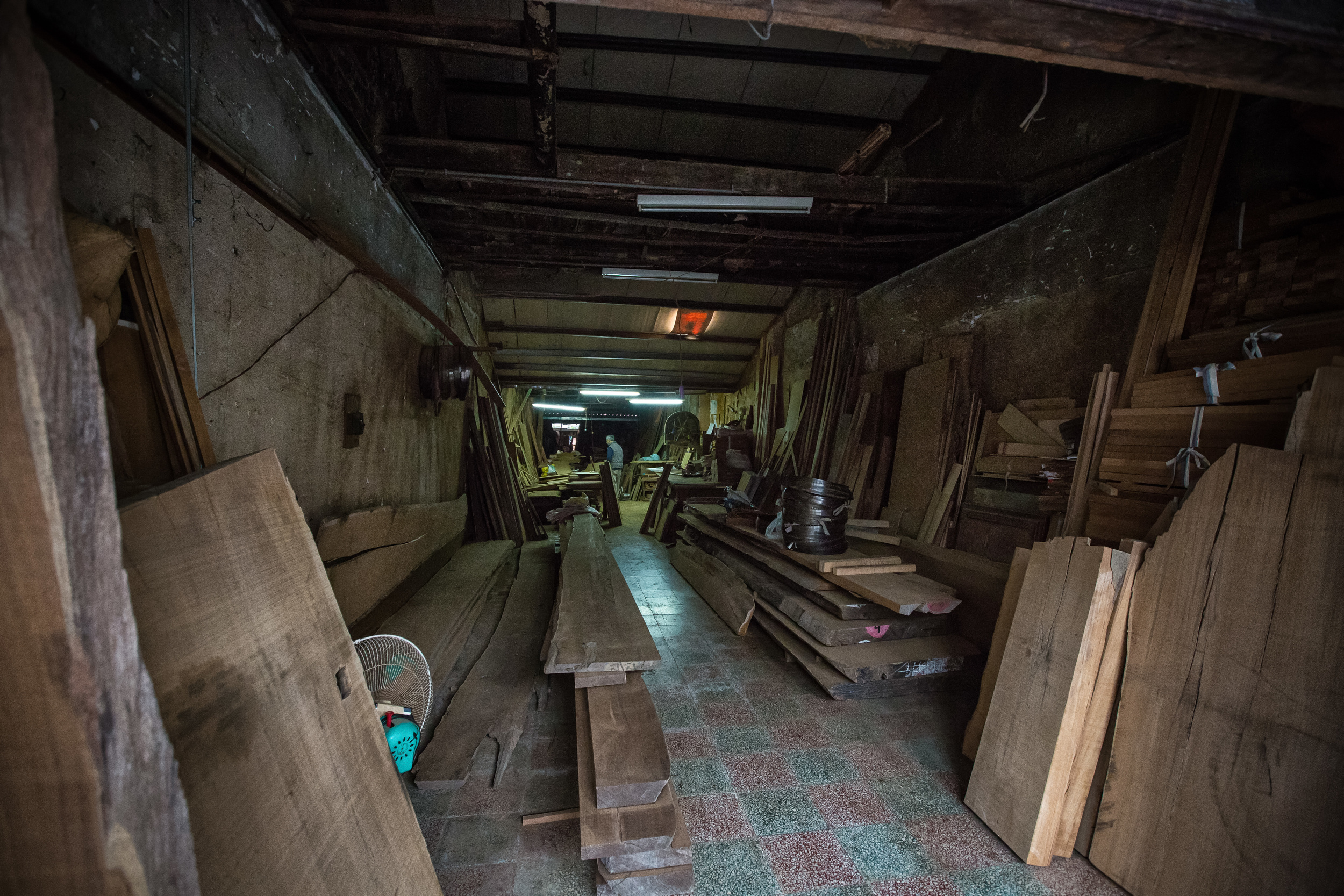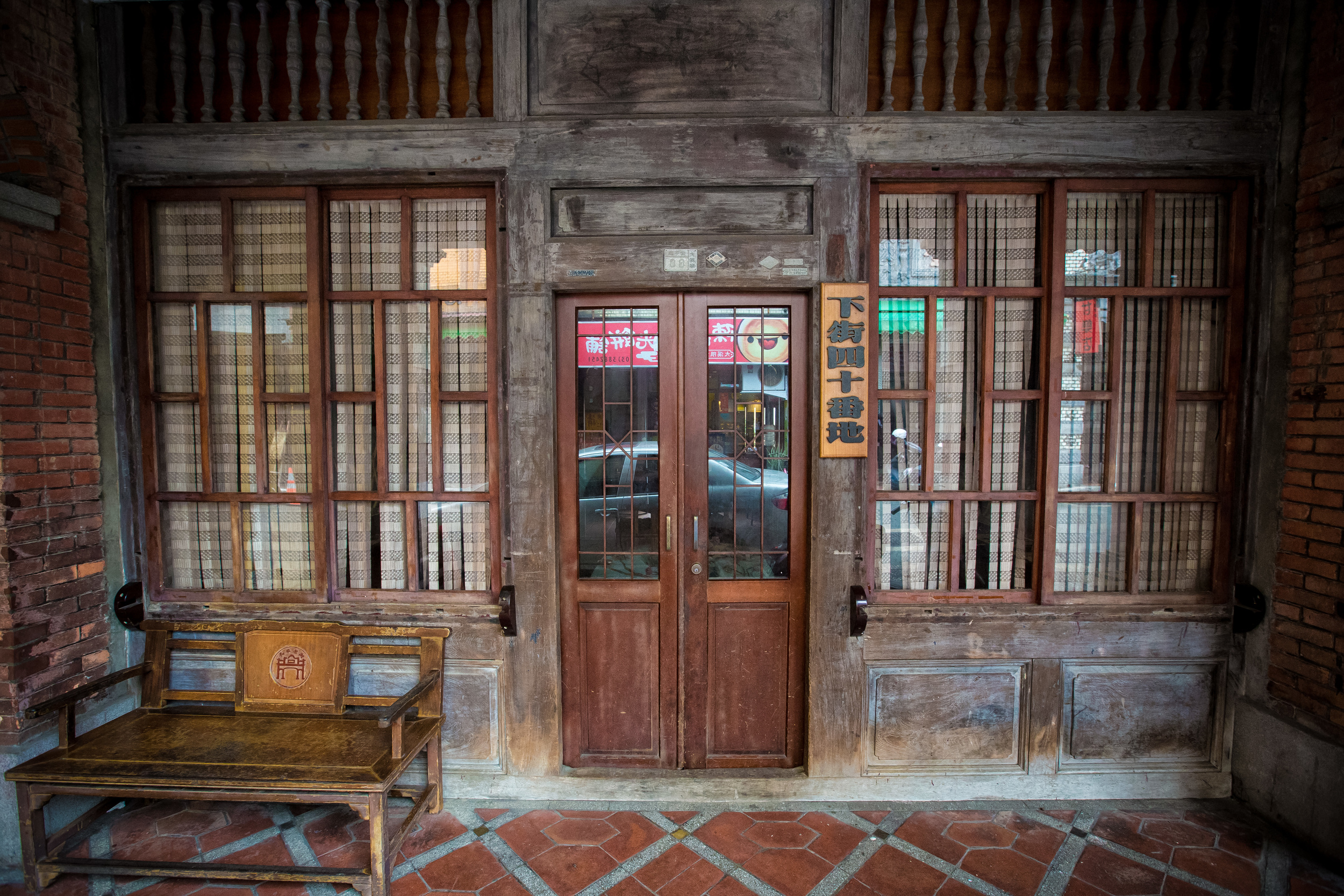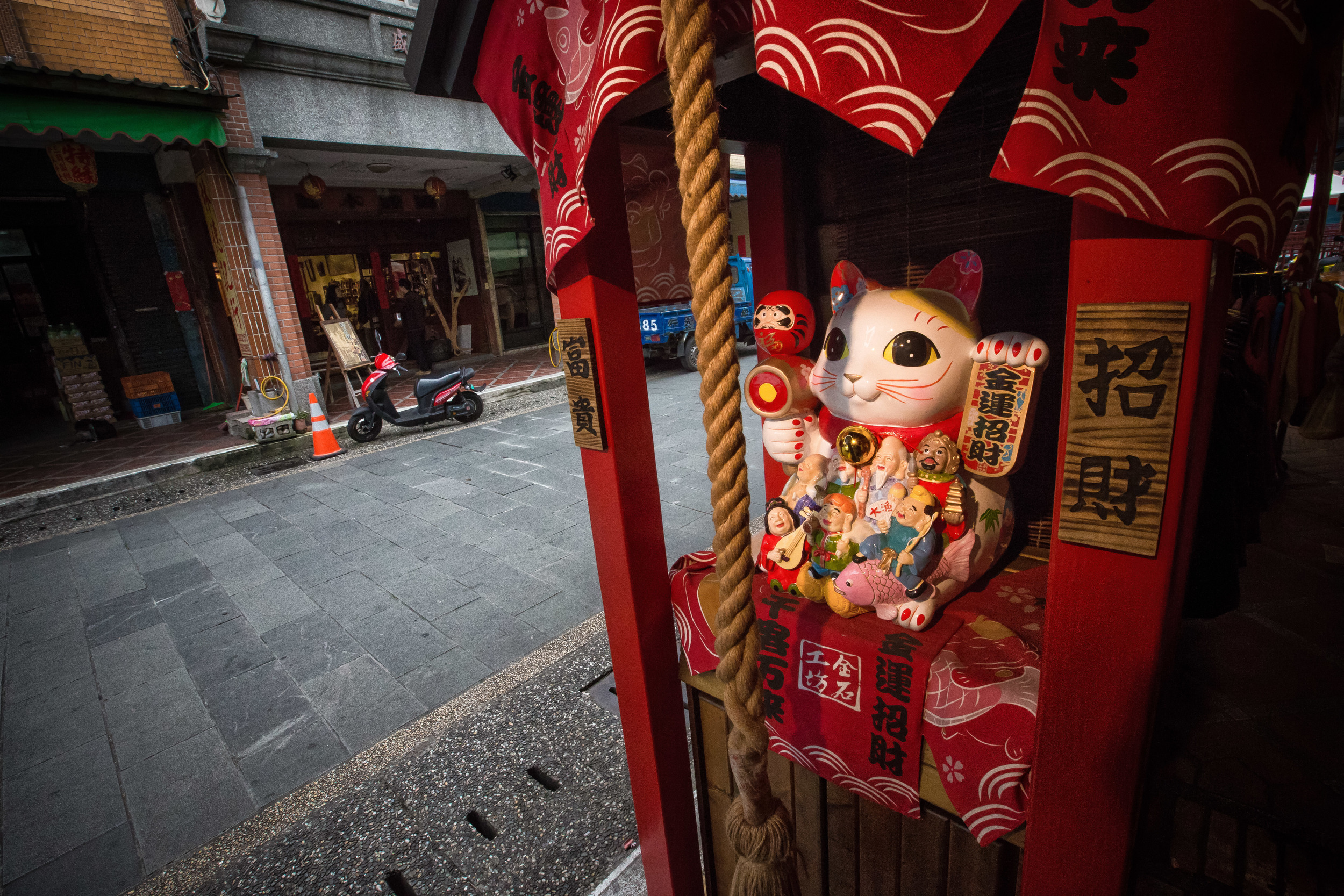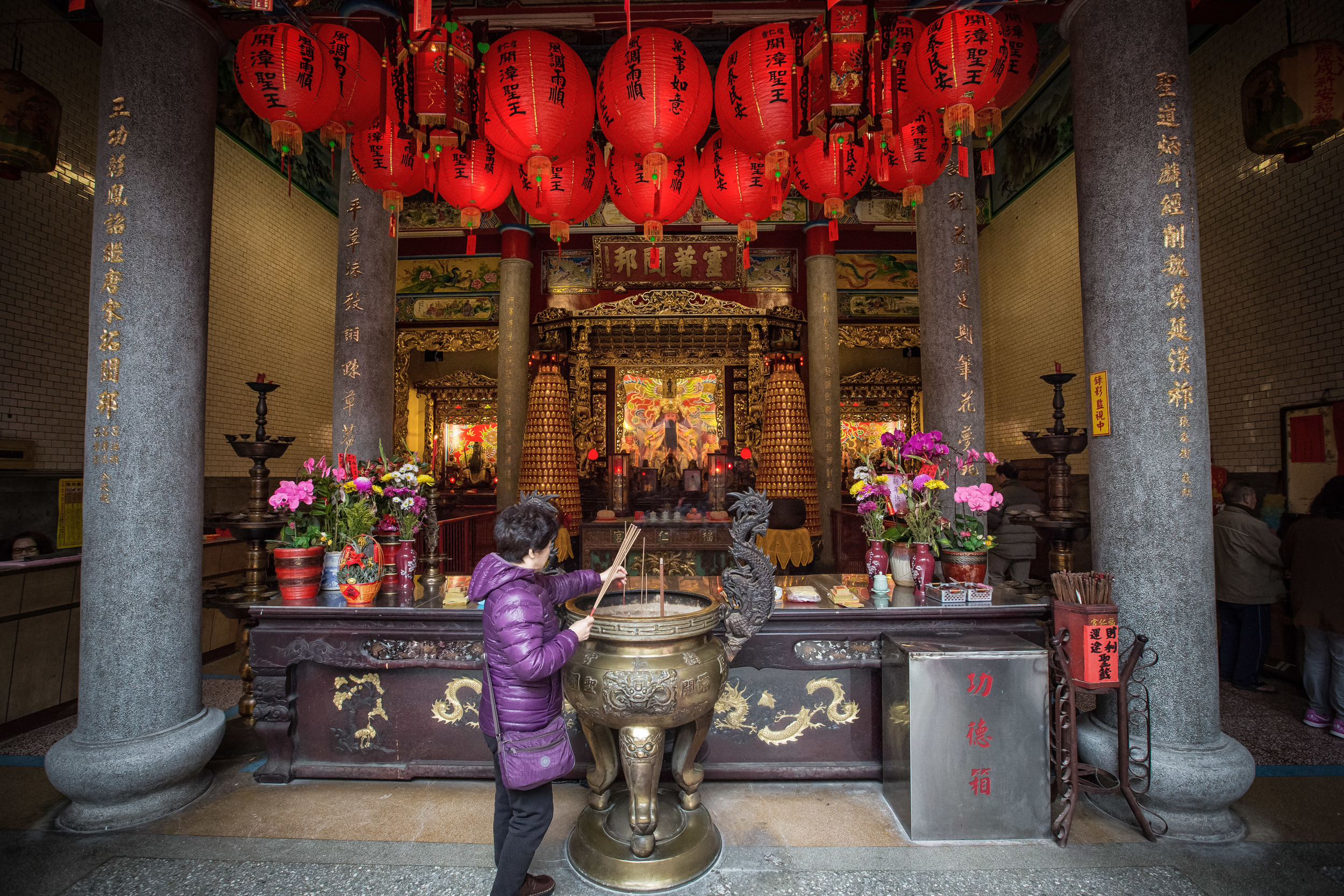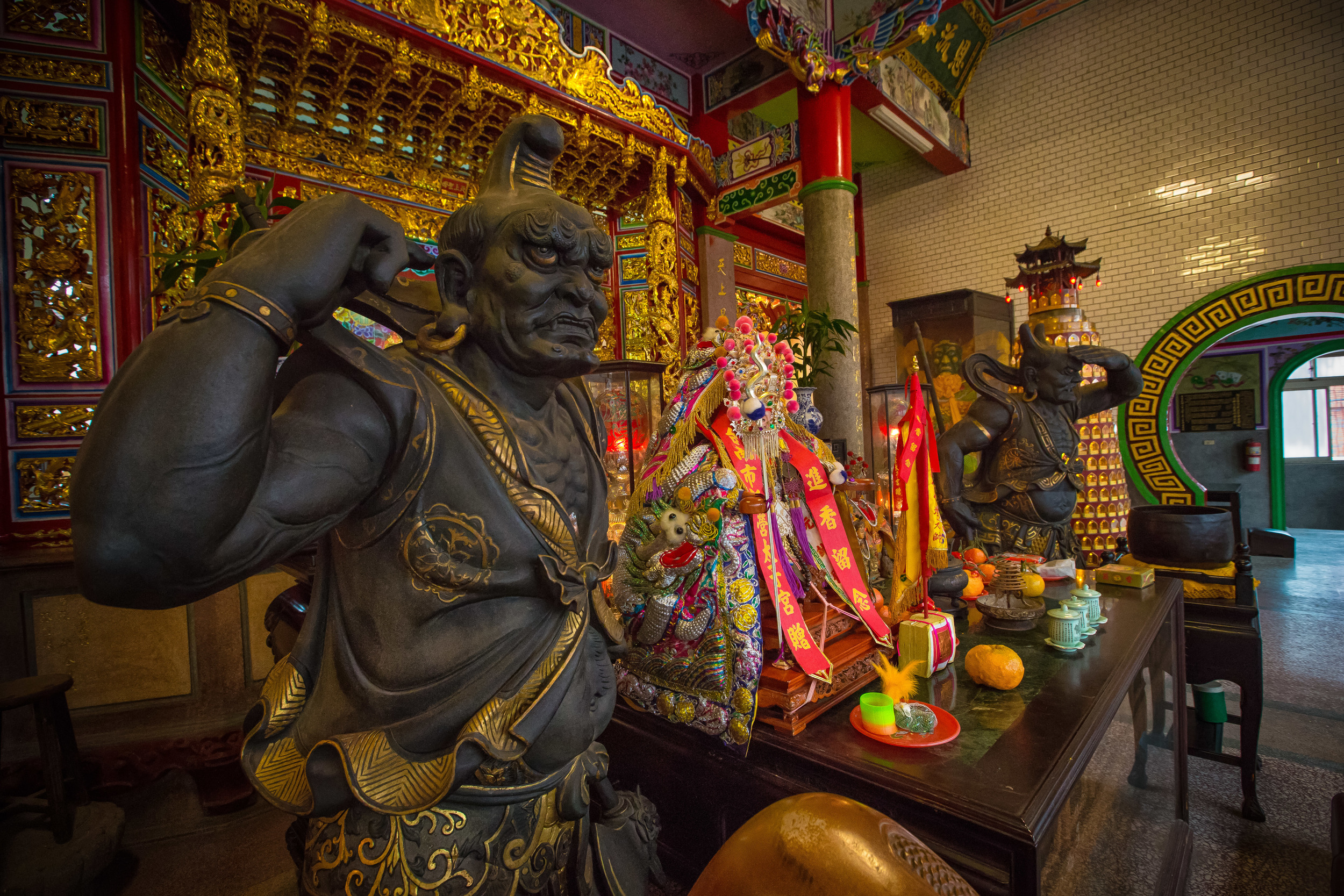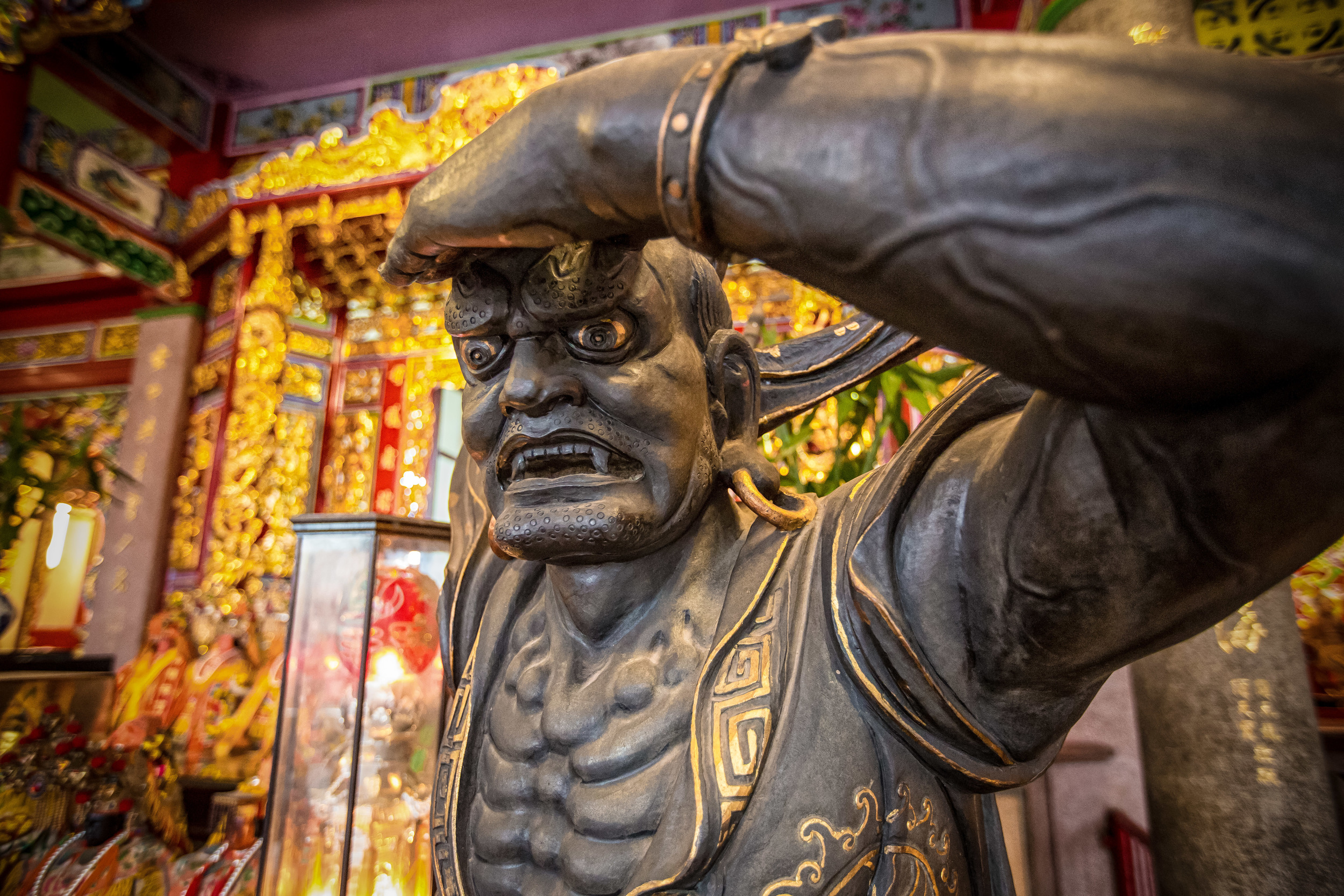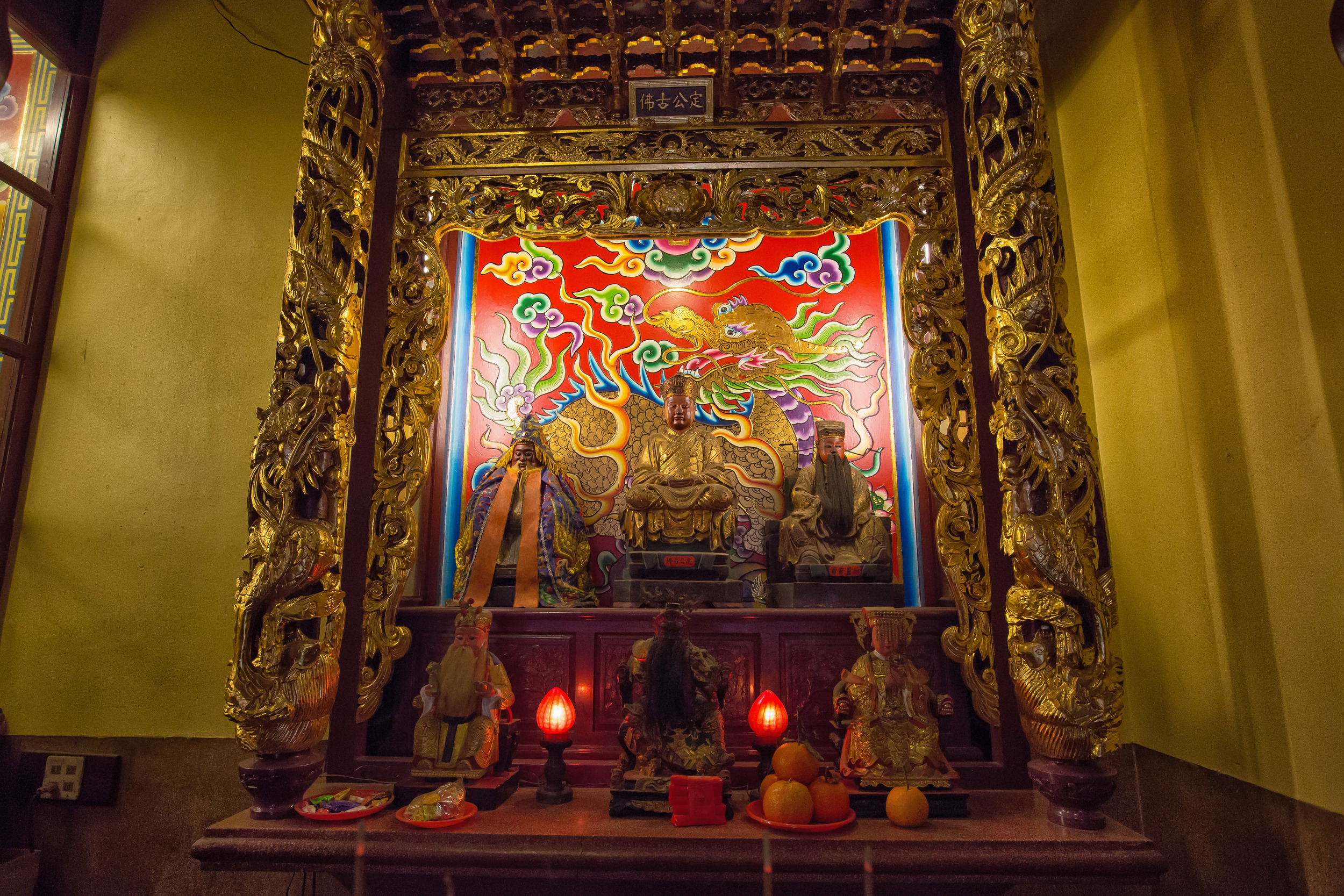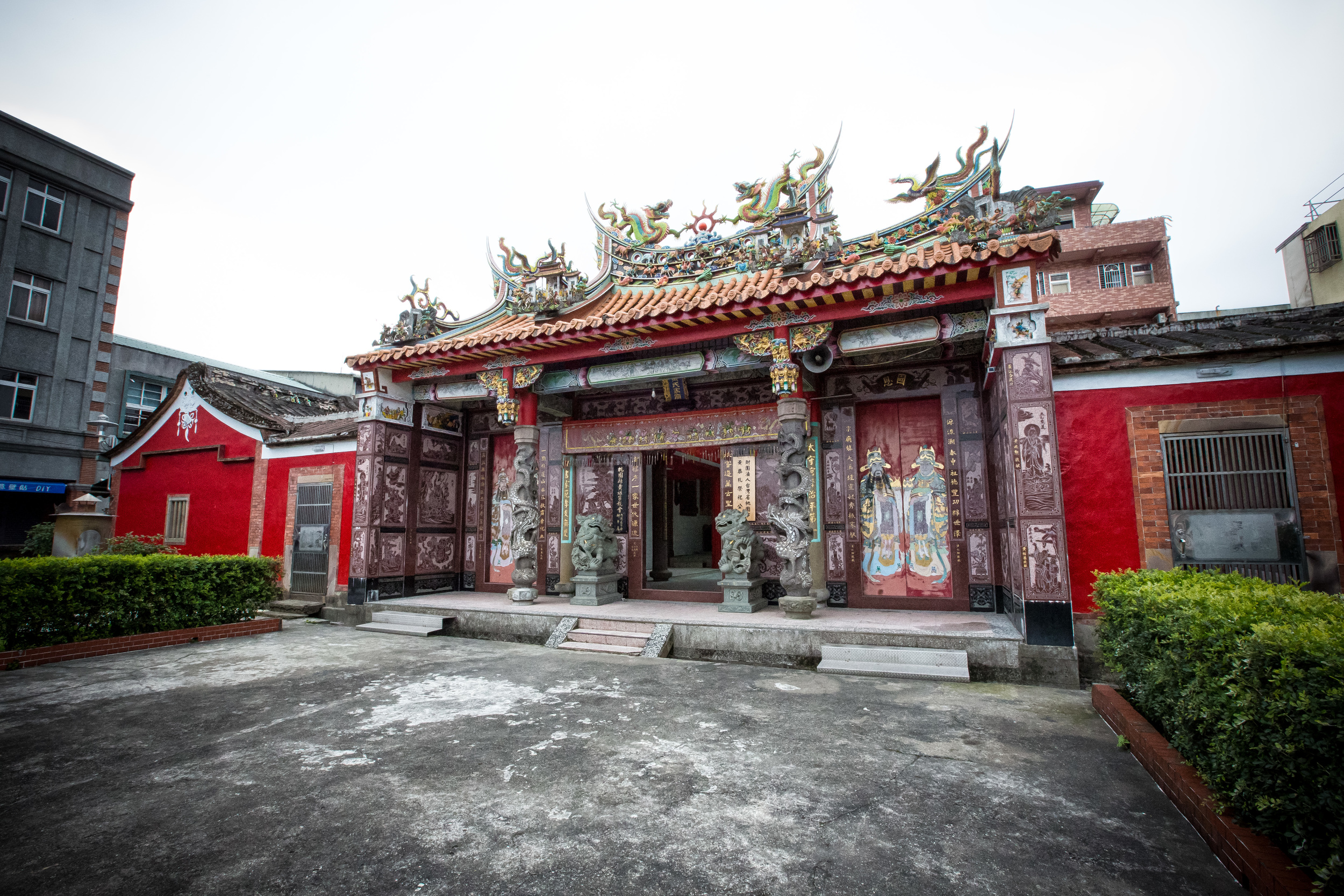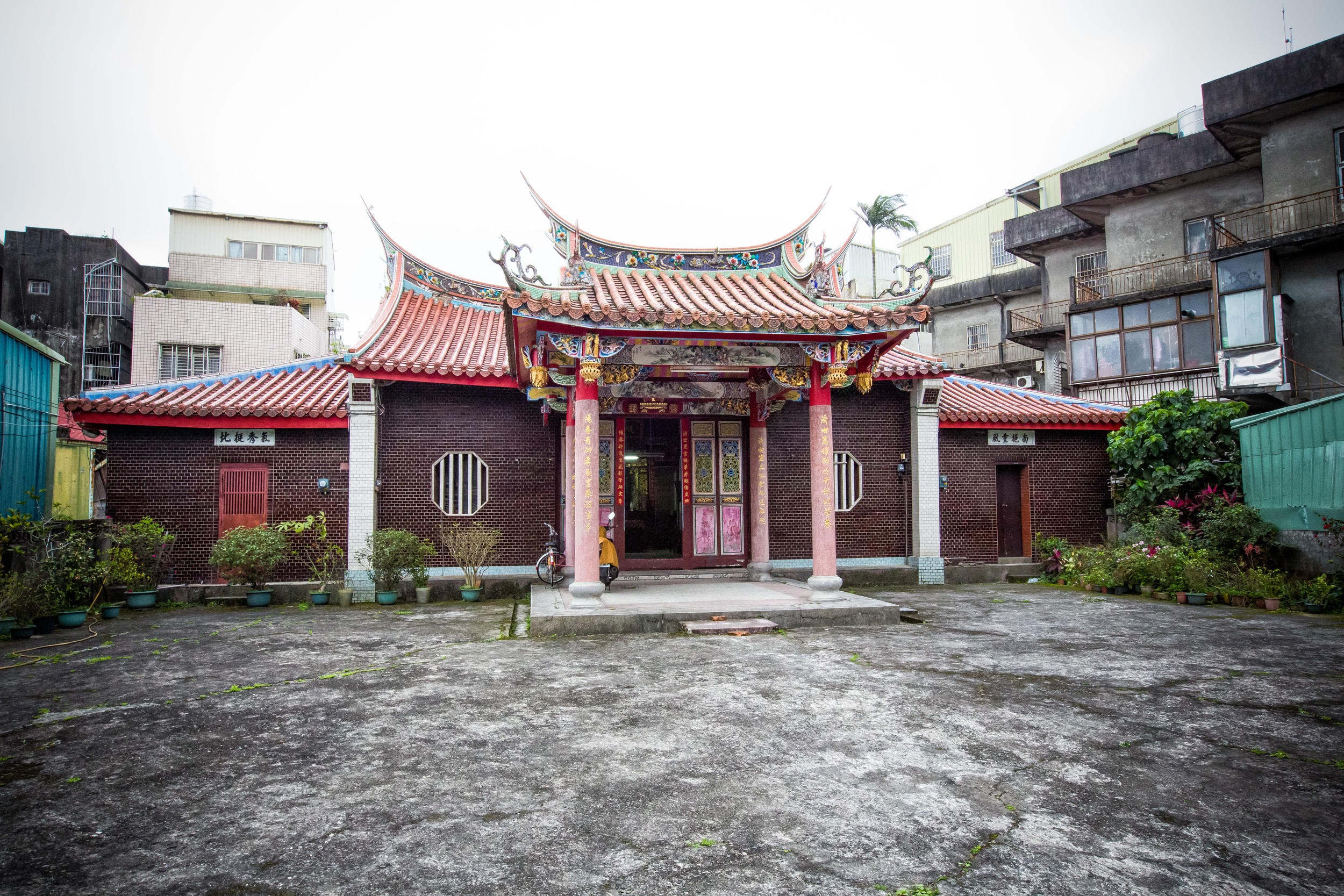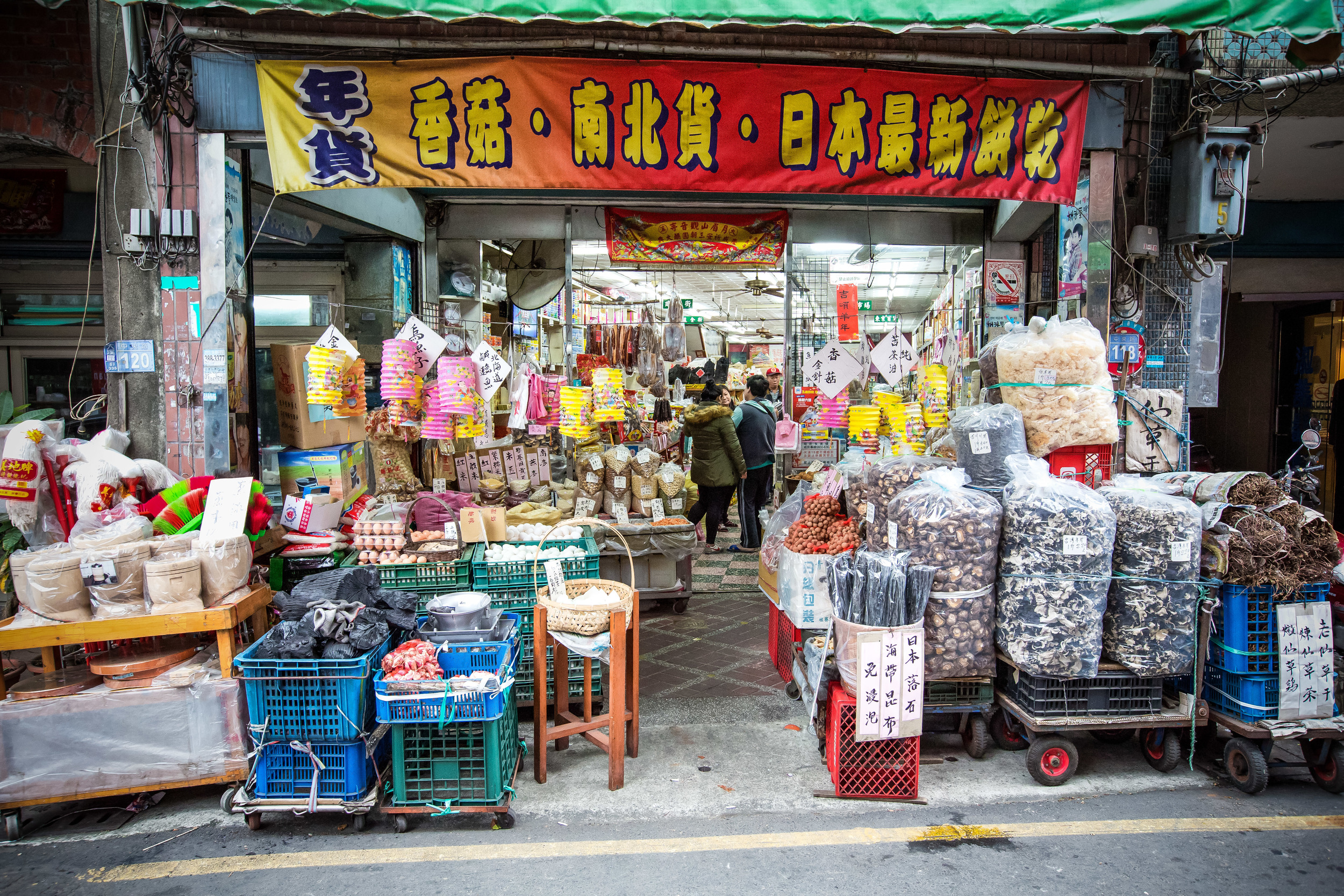Daxi Old Street (大溪老街) is probably one of the nicer and more well-maintained of all of Taiwan’s old-streets. The street, which is also known as “Peace Street” (和平路) is renowned in Taiwan for it's architectural style and it draws large crowds of people on weekends wanting to experience a bit of Taiwanese history.
The government has recently started to push for more foreign tourism in the area, opening Taiwan’s first “Traveler's Space” which will offer multi-lingual services, self-guided tour maps and samples of some of the specialties that Daxi has to offer.
I visit Daxi often as it is relatively close to where I live and when I go, it is always on the weekends when it is busiest – This time (much like my walk through Beipu Old Street) I wanted to walk around the relatively empty streets on a weekday and explore the back alleys behind the street for a glimpse into the lives of the residents of the village and not have a bunch of people filling my frames.
Even though I've visited several times, I've never really explored many of the streets and alleys around the main street. I was surprised this time to find several streets and alleys that were more or less the same as the Old Street in architectural-style (however showing a bit of their age due to a lack of maintenance.)
The Daxi River Valley area is already quite popular with domestic tourists and those from China as well because Daxi is the resting place of former presidents Chiang Kai Shek (蔣介石) and Chiang Ching Kuo (蔣經國.) The Chiang family was quite fond of the village back in the day and had residences in the town and outside of the town in Cihu (慈湖) which is where the Chiang’s lie in state.
Tourists from China who visit Taiwan often visit these areas to show their respect to the Chiang’s, who were important figures in modern Chinese history despite the precarious nature of the political situation between the two countries and the Chiang family legacy in both China and Taiwan during the Chinese Civil War.
Long before Chiang and his Nationalists retreated to Taiwan from China, Daxi was a commercially successful village that found its riches exporting tea and camphor. The Old Street was originally constructed as a shortcut to transport goods to the river and as the economy grew in the village, businesses soon starting popping up along the street.
The wealthy merchants in the village wanted a way to show off a bit of their prosperity so they hired artisans to come and help design and carve beautiful stone designs on their homes and businesses along the main street and the streets around it. What you see today is a neighbourhood designed in the "baroque" style of architecture (which was popular in Europe at the time) fused with both Chinese and Japanese influences.
The village thrived for decades due to trade between the Dahan River (大漢溪) and the Danshui River (淡水河) but improved modes of transportation took over as the preferred method of moving goods back and forth which dealt somewhat of an economic blow to the village.
Even though the economy started to decline, people in the village continued to do well for themselves through the end of the Japanese occupation and the Nationalist takeover. The village was eventually adopted by the Chiang family as a retreat of sorts and within the last few decades it has became a tourist “old street” for people who want to experience the feeling of walking through a historical street that seems more like a Hollywood set than a real-life town.
History alone however wouldn't bring the masses to the village on the weekends. Taiwan is a food-crazed country and people are willing to travel all over just to try specific dishes. Luckily, Daxi has quite a few of its own delicacies to add to the historical attraction. If you visit Daxi and are completely unaware of what the popular dishes are, one indication would be the store fronts that have long lines of people waiting to sample some of the foods.
There is a variety of food that you can eat while on the Old Street and there are a lot of vendors who set up each and every day along the road making it seem a little like a night market. You should be sure to try some of the most popular dishes though, namely the Dried Tofu (豆乾), some Tofu Pudding (豆花) and freshly made Peanut Candy (花生糖.)
The Main Street is also filled with small shops selling traditional toys for children as well as souvenirs and other Taiwan-related things - and even some kimonos if you so desire!
As mentioned before, on this visit I spent the most of my time on the streets adjacent to the Main Street as it is the area where the actual residents do their every day shopping and where you can see the locals in their natural environment. In these areas you can find small restaurants filled with local people as well as traditional grocery stores and farmers selling local produce. To me, these areas are a lot more interesting than touristy areas and I recommend that if you visit Daxi, you spend a bit of your day wandering around the adjacent streets and don't spend all your time on the old street.
Walking along the other old roads like this will also take you past old Japanese-era buildings, the former summer residence of Chiang Kai-Shek, some well-maintained Fujian-style mansions and a mountainside park that has an excellent view of the popular Daxi bridge (大溪橋.) and the fading Da-Han river. Most Taiwanese people visit Daxi make the bridge an important part of their itinerary as it is quite beautiful walking across it at night. Taiwanese people have an affection for bridges that foreigners have a hard time understanding. The Daxi Bridge is a historical one though and I guess I can see some of the appeal.
The old street also has three important places of worship, the biggest being Fu-Ren temple (福仁宮) a multi-faith temple, Shou-De Zen Buddhist Temple (修德禪寺) and Po-Chai Taoist Temple (普濟堂.) The temples hold several major events religious events each year (one of which I hope to shoot this year) and are quite important to the village both historically and culturally.
Daxi Old Street can be a pretty busy place, yet for all the years I've been going, I haven't really seen many foreigners. Some might not know about the village, and others may feel it is an inconvenient day trip. I hope the new initiative by the government will bring in more foreign tourists to enjoy the sights and learn about the history of the village. If you are relying on public transportation to get to the village, then you will be a bit limited in what you can do, but if you have your own method of transportation, you can easily fill an entire day in the area and I highly recommend some of the other attractions.
Coincidentally as I'm standing on the sidewalk with my iPad in hand in Taipei waiting for a bus and writing this blog, a bus drove by on the other side of the road with a full-side English advertisement for the village in an attempt to bring foreigners.
It is quite evident there is a push to promote Daxi, so I hope the next time I go I can see some more foreign faces!
Getting to Daxi Old Street
No. 1 National Highway(國道一號) -> Taoyuan Interchange (桃園交流道) -> No. 4 Provincial Highway(台4線) -> Daxi (桃園大溪) -> Heping Road, Zhongshan Road & Zhongyang Road (和平路及中山路、中央路)
No. 1 National Highway(國道一號) -> Pingzhen Interchange (平鎮交流道) -> No. 61 Provincial Highway (台61線) -> Daxi (桃園大溪) -> Heping Road, Zhongshan Road & Zhongyang Road (和平路及中山路、中央路)
No. 3 National Highway (國道一號) -> Daxi Interchange (大溪交流道) -> Chiding (崎頂) -> Daxi (大溪)-> Heping Road, Zhongshan Road & Zhongyang Road (和平路及中山路、中央路)
By Bus:
Take Taoyuan Bus 桃園客運#5096 (Taoyuan-Daxi route) from the back of Taoyuan Train Station (桃園後火車站) to Daxi (大溪) or take Taoyuan Bus 桃園客運#5096 (Zhongli-Daxi route) from the rear exit of the Zhongli Train Station (中壢車站)
Gallery / Flickr (High Res Shots)
